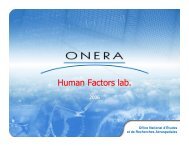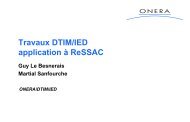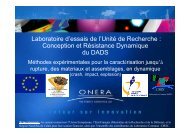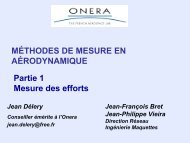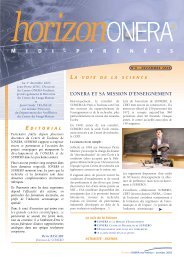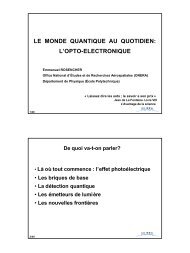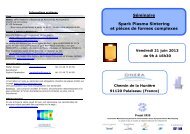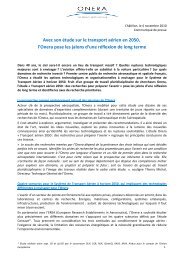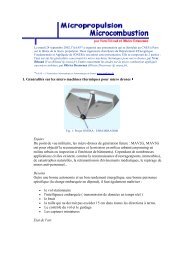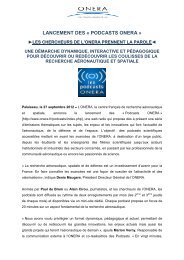From Air Transport System 2050 Vision to Planning for ... - Onera
From Air Transport System 2050 Vision to Planning for ... - Onera
From Air Transport System 2050 Vision to Planning for ... - Onera
You also want an ePaper? Increase the reach of your titles
YUMPU automatically turns print PDFs into web optimized ePapers that Google loves.
Technologies <strong>for</strong> the airport of <strong>2050</strong><br />
The table below summarises the technologies and competences offered by the aeronautical research centres that will make major contributions <strong>to</strong> the<br />
airport of <strong>2050</strong>.<br />
AIRPORT<br />
<strong>Air</strong>port component<br />
and functions<br />
Promising technologies<br />
drivers<br />
Passenger- Two-way communication devices:<br />
oriented - Datalink technologies and wireless communications User com<strong>for</strong>t<br />
airport - Cloud computing, computer identification, human-machine interfaces Capacity<br />
- Robotics: assistance robots. Terminal transport systems<br />
<strong>Air</strong>port Network<br />
Data fusion techniques, field sensor network<br />
<strong>Vision</strong> techniques, remote sensors and acquisition devices <strong>for</strong> security check<br />
Safety<br />
Operations In<strong>for</strong>mation & Communication technology, dynamic multi-risk management Security<br />
New aircraft configurations<br />
Environment<br />
New aircraft procedures and new procedures management<br />
Capacity<br />
In<strong>for</strong>mation Optimisation analysis based on multi-ac<strong>to</strong>r, multi-objective, risk moni<strong>to</strong>ring,<br />
handling and management system, sensors and ambient intelligence<br />
collaborative Near-field communication technologies, RFID, Blue<strong>to</strong>oth and mobile devices, Capacity<br />
decision LED bar codes Safety<br />
making Development of multi-scanning devices Security<br />
Voice and data link between base-station and vehicles,<br />
various transmission technologies<br />
GPS, Galileo, high resolution radar<br />
41<br />
Ground-based Develop noise-preferential approaches<br />
noise Noise moni<strong>to</strong>ring and modelling Environment<br />
measurements Noise walls or anti-noise interferences systems<br />
<strong>Air</strong>side<br />
All weather The aircraft as a meteorological sensor Capacity<br />
operations Improved instant <strong>for</strong>ecasting (i.e <strong>for</strong> strong winds) Safety<br />
In<strong>for</strong>mation sharing with other air vehicles and the ground



